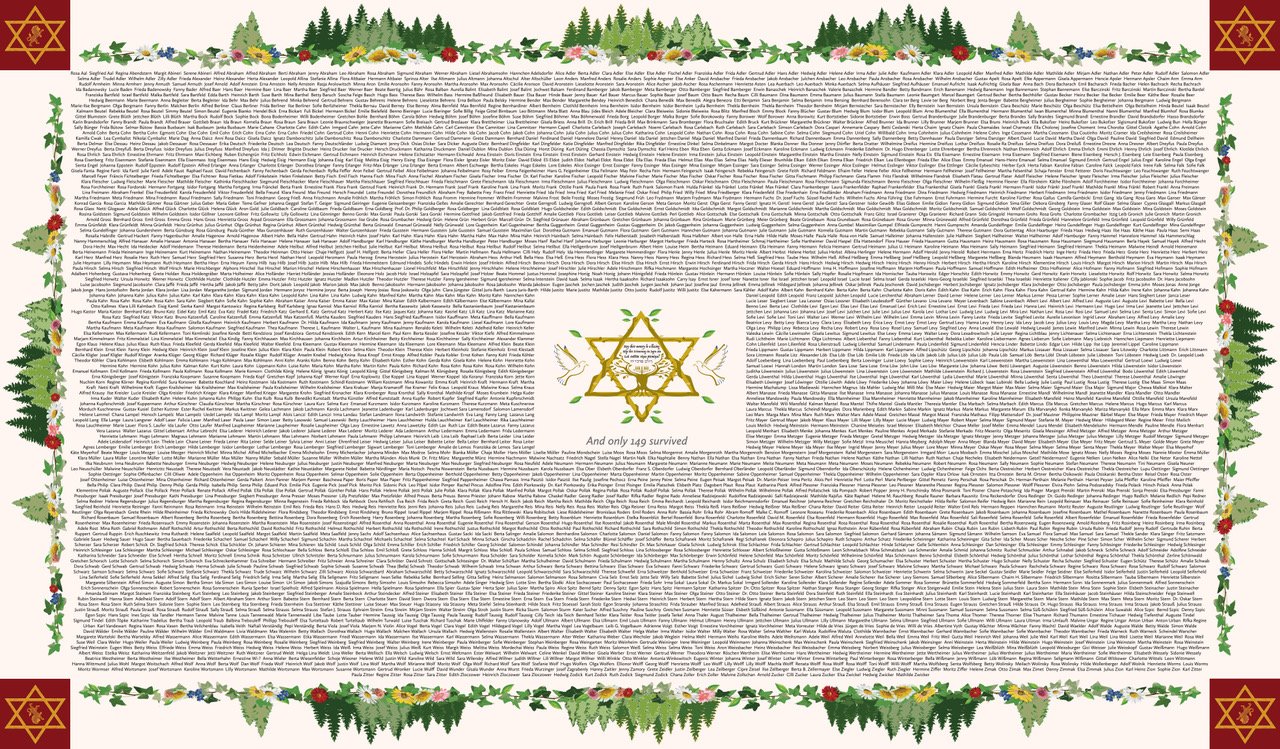Directed and Produced by Karen Frostig
Photo Credit Mike E. Dunne
Lead Artist and Artistic Director Karen Frostig with Ed Malouf, Jennifer Varekamp, and Emily Moughan (2024).
“Mourning Shroud for the Jungfernhof Concentration Camp”. Cloth embroidered and printed. 96” x 144.”
Karen Frostig, Director and Producer. Mike E. Dunne, Still Photographer and Video Editor
Karen Frostig, Leader
The Group
Anabel Gil Diaz, Anima Terrae (Earth’s Soul) played on a fife (black flute).
Cantor Alicia Stillman, Temple Israel of Boston, Brandeis ‘89
Descendants from US and Germany
Descendants speak, reading names of loved ones
Paul Roth
Pete Stern, Survivor of five camps and uncle to Alan Stern
Fred Zimmak
Myrna Hass
Dr. Alan Stern, descendant and nephew of Pete Stern, and son to the late Dr. Samuel Stern
The Procession
Carrying the shroud out into the courtyard, Steve Miller sprinkles the land with earth carried from the Jungfernhof concentration camp to Brandeis University in a symbolic gesture of bridging these two worlds. The shroud, printed with the names of 3836 victims became the tangible object linking the past to the present. A trace of Jungfernhof will remain in Waltham, just as a trace of memory remains at the camp.
Photo credit: Mike E. Dunne
















